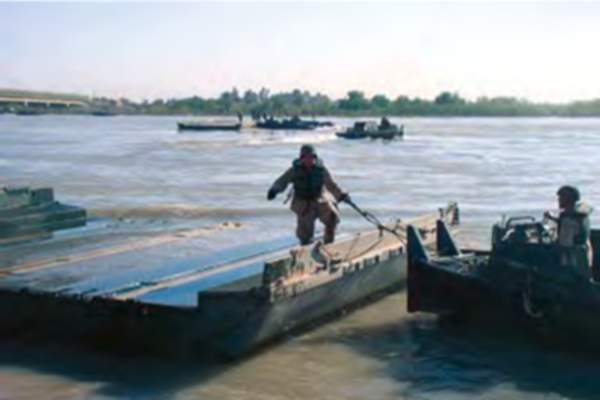
GDELS is delivering over 1000 ASCODs to various European armies. What are the main advantages of the ASCODs and what is the reason for their popularity around Europe?
ASCOD is a modular vehicle solution based on the successful common base platform concept developed by GDELS. It has resulted in a major modularity of our platform. ASCOD is in operation in several user nations under different denominations, for example, the Spanish Pizarro, the Austrian Ulan or the British Ajax, which shows the proven capabilities of the platform itself.
The reason many European armies chose our modular ASCOD solution is that it provides them and their soldiers with great adaptability options, superior mobility and interoperability, an array of lethality options, high survivability and enormous capacity and growth. ASCOD also has a proven record of accomplishment in a wide range of mission roles and has demonstrated that it is able to cope with current and future needs.
Why is modularity at the forefront of ASCODs?
A modular system based upon a common platform constitutes the DNA of the ASCOD family. An open mechanical, electrical and digital architecture is the centerpiece in accommodating complementary as well as diverging requirements. Customer needs differ from combat operations in the open field to peace supporting missions in urban areas, or in different climatic zones. Not forgetting the different maneuver support vehicles. The ASCOD Common Base Platform can be complemented with different role-driven packages, different choices of effectors and optional levels of survivability.

Moreover, the current economic situation is leading to budgetary restrictions in Defense. Therefore, having a common platform will immediately result in a reduction of development investment, efficiencies in production and supply chain, increased interoperability and reduced through-life support costs.
ASCOD is a real and proven vehicle platform, with a significant number of variants produced based on this principle, e.g. Armour Personnel Carrier (APC), Command Post, 155 Howitzer, 105-120 mm Light Tank, Repair, Recovery, Bridge Layer, Engineering or Reconnaissance. All of them are manufactured, tested and delivered. No 3D renders. Just real vehicles.
Besides modularity, what other advantages does the ASCOD bring to the table?
There are several important aspects of the superiority of ASCODs, and mobility is definitely one of them. ASCOD is able to meet, beat and exceed any given mobility requirement for this vehicle class. The mobility of the vehicle is maximized thanks to the unique suspension system. The additional 7th road wheel provides an improved driveability, minimizes pitch response and reduces ground pressure, that makes a difference.
On the other hand, the size and dimensions of ASCOD are totally aligned with GDELS strategy in light of the European Military Mobility challenge. By military mobility we understand the ability to move forces and equipment rapidly from A to B. Infrastructure, in terms of roads, railroads and bridges are not prepared for the timely deployment of a joint forces capability to establish a credible deterrence, especially for capability beyond 50 tons. ASCOD is below this threshold, and therefore prepared to support maneuvers with its multiplicity of roles, like the bridge launcher configuration, based on our COBRA solution or the engineering configuration.
In battlefield conditions, the most important factor is crew survivability provided by the built-in mine protection system, with an optimal combination of structural resistance and elasticity. The GDELS patented decoupled-floor protects the soldier facing a mine threat even without the use of the seats and footrests, which definitely helps in minimizing crew fatigue. The choices of add-on armor provides various protection levels, protecting ASCOD against improvised explosive devices (IEDs), explosive formed projectiles (EFPs) and top attacks, while also preserving mobility kill with the protected powerpack.
Capacity is also important: ASCOD offers free payload and power reserve. This, in combination with the open architecture allows for growth and technology insertions. Technology is evolving at two speeds: the mechanical and the digital systems run at different paces, and so do their obsolescence cycles. The digital architecture compliant with GVA standards ensures quick replacement of board electronics, computers and user interfaces by the upcoming technologies, like electrification, autonomous driving or interaction with UXVs. This means that ASCOD is a next generation platform already.
The turrets have also been a part of the discussion, how is it with ASCOD?
As for firepower, ASCOD can accommodate a variety of turrets from different OEMs, ranging from 25mm to 120 mm calibre, all of course with anti-tank guided missiles (ATGM). For example our latest ASCOD light tank version sports a 105/120 mm turret, delivering the firepower of a MBT within the envelope and mobility of an IFV, all within the MLC50 design guideline for military mobility and observing A400 requirements for strategic deployability. Another example is the ASCOD flat-bed cargo version, that can accommodate other kind of effectors, like a 155 mm artillery module for a howitzer role (aka DONAR) or a Multiple Launch Rocket System.
José Manuel Lineros, Vice President Engineering GDELS
Lineros joined General Dynamics in 2000 and is the Vicepresident of Engineering and a member of the Senior Leadership Team of General Dynamics European Land Systems, headquartered in Madrid, Spain. Lineros has more than 20 years of experience in the defense business leading a multinational team of engineers across Europe, driving product development strategy and future technology solutions for the business. He also collaborates with different universities in lectures, and is a member of the General Dynamics Technology Council worldwide. He has a degree in Mechanical Engineering and a MBA by IE Business School.





